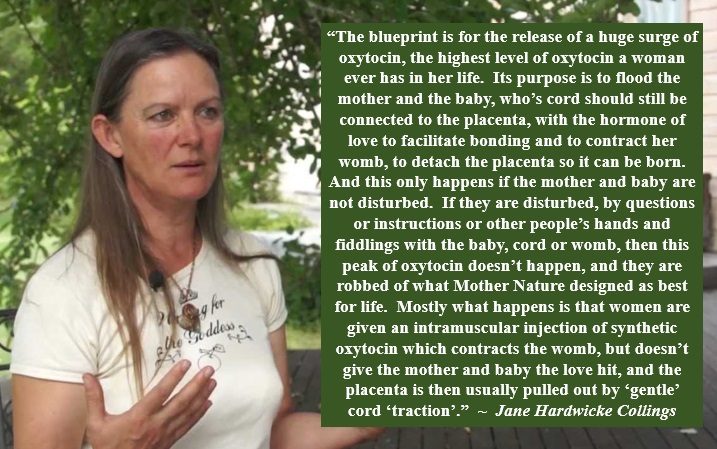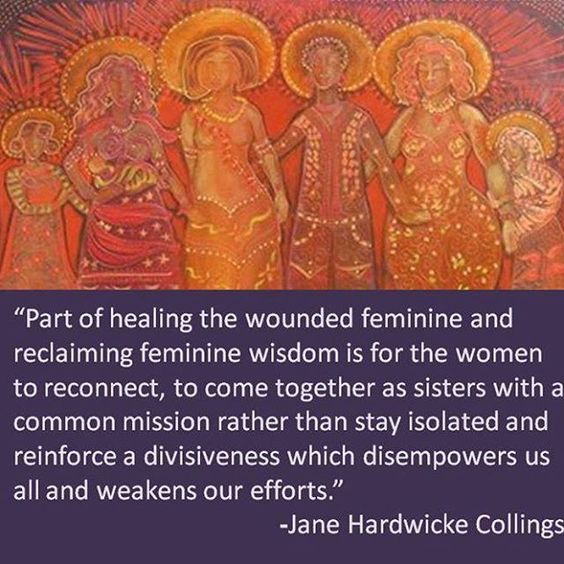
Oxytocin (synthetic)
Jane Hardwicke Collings
Jane Hardwicke Collings
I want to talk a bit more about the birth of placentas...
This part of birth is one of the most rushed and most fragile.
It is the ‘space in between where the magic happens’.
The blueprint is for the release of a huge surge of oxytocin, the highest level
of oxytocin a woman ever has in her life. Its purpose is to flood the mother and
the baby, who’s cord should still be connected to the placenta, with the hormone
of love to facilitate bonding and to contract her womb, to detach the placenta
so it can be born. And this only happens if the mother and baby are not
disturbed. If they are disturbed, by questions or instructions or other people’s
hands and fiddlings with the baby, cord or womb, then this peak of oxytocin
doesn’t happen, and they are robbed of what Mother Nature designed as best for
life. Mostly what happens is that women are given an intramuscular injection of
synthetic oxytocin which contracts the womb, but doesn’t give the mother and
baby the love hit, and the placenta is then usually pulled out by ‘gentle’ cord
‘traction’.
As Minmia said: "With the cord still pulsing, and as the baby takes its first
breath, information is transferred to the baby from the placenta via the cord,
on how to follow the map, their Miwi print."
One of the other significant things that happens after the baby is born is that
blood continues to flow through the cord and the baby receives a further 10-50%
more of its own blood, and this process it seems is regulated by the baby , that
is if the cord isn’t cut straight away, which unfortunately continues to be
common practice even though there is plenty of evidence to not do so.
There are many studies about the effects and differences between physiological
third stage and active management of the third stage, and as always with these
things you need to do your research to make your decisions and not get bullied
into a policy. Sara Wickham is a great writer on all aspects of birth
http://sarawickham.com/wp-content/uploads/2011/10/a1-further-thoughts-on-the-third-stage2.pdf
http://www.sarawickham.com/tag/third-stage/
And so is Sarah Buckley, see here
http://sarahbuckley.com/leaving-well-alone-a-natural-approach-to-the-third-stage-of-labour#ref
For the benefits of a natural or physiological third stage.
If you want to get the whole picture about it all read Rachel Reed’s writing
here
https://midwifethinking.com/2012/05/05/an-actively-managed-placental-birth-might-be-the-best-option-for-most-women/
